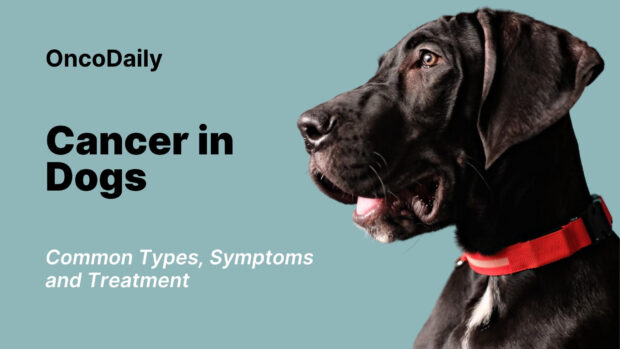Cancer in dogs is a significant health concern and one of the leading causes of death in pets worldwide. Early detection plays a crucial role in improving treatment outcomes, as cancers caught at an early stage are often more localized and easier to treat with surgery, chemotherapy, radiation, or emerging therapies. Detecting cancer before clinical signs appear can reduce the physical and emotional burden on both dogs and their owners.
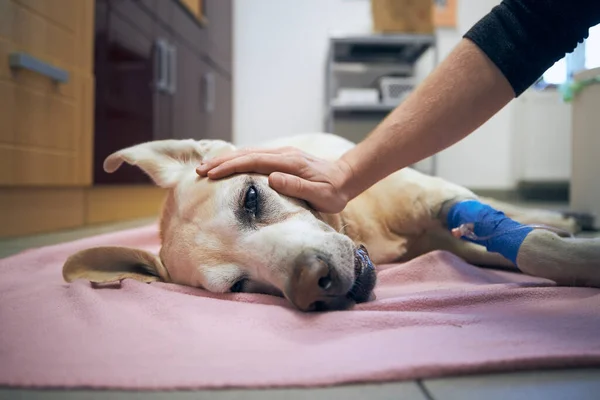
Photo:Depositphotos
In this article, readers will learn about the common types of cancer in dogs, typical symptoms to watch for, modern diagnostic methods including advanced screening tests, and the range of treatment options available to help manage the disease effectively.
What Is Cancer in Dogs?
Cancer in dogs represents the uncontrolled, abnormal growth and division of cells within the body . These abnormal cells can form masses, known as tumors, which may be localized (confined to one area) or invasive . Approximately 25% of dogs will develop some form of cancer in their lifetime, with this figure rising to about 50% for dogs over the age of 10. American Veterinary Medical Association
Cancer develops when cellular regulation fails, leading to unchecked proliferation . The disease can progress through several stages, from early, localized forms to advanced stages where it spreads throughout the body . This spread, known as metastasis, occurs when cancer cells from the primary tumor move to distant organs or tissues . The progression of cancer is assessed through staging, which indicates how much the cancer has advanced and how far it has spread from its original location . Common staging systems, such as the TNM (Tumor, Node, Metastasis) system, evaluate tumor size (T), involvement of lymph nodes (N), and the presence of distant metastasis (M) . Staging is crucial for determining prognosis and tailoring treatment plans. DogCancer.com
While cancer can affect dogs of any age, advanced age is a significant factor influencing risk . Factors that contribute to cancer risk include age , and intrinsic features of the tumor such as its aggressiveness (grade).
What Are the Most Common Types of Cancer in Dogs?
Dog cancers vary in prevalence depending on breed, age, and genetic predisposition, with some breeds like Boxers, Bernese Mountain Dogs, and Rottweilers showing higher incidence rates for specific cancers.
- Mast Cell Tumors: These are the most frequent skin cancers in dogs, often appearing as lumps or bumps on the skin. They can vary widely in behavior from benign to aggressive forms and require veterinary evaluation for diagnosis and treatment.
- Lymphoma: A cancer of the lymphatic system, lymphoma is one of the most common cancers in dogs. It can affect lymph nodes and internal organs, causing symptoms like enlarged lymph nodes, lethargy, and weight loss.
- Osteosarcoma: This aggressive bone cancer primarily affects large and giant breed dogs. It is highly metastatic and often causes lameness and swelling in the affected limb.
- Hemangiosarcoma: A cancer originating from blood vessel cells, hemangiosarcoma commonly affects the spleen, heart, and skin. It is known for rapid progression and internal bleeding.
- Transitional Cell Carcinoma: This is the most common type of bladder cancer in dogs, particularly prevalent in certain breeds like Scottish and West Highland terriers. Symptoms include difficulty urinating and blood in the urine.
Oral melanoma is a malignant tumor that develops in the mouth and is often aggressive, with a high tendency to metastasize to other parts of the body. Soft tissue sarcomas arise from connective tissues such as muscles, fat, and fibrous tissues, and can vary in their behavior from slow-growing to highly invasive. Mammary tumors are common in intact female dogs, with some forms being benign while others are malignant, requiring prompt veterinary evaluation and treatment. Elena Sophie Dhein, PLos One, 2024
What Are the Common Symptoms of Cancer in Dogs?
Cancer in dogs can present with a variety of symptoms that often overlap with other health conditions, making early recognition challenging but crucial. One of the most noticeable signs is the presence of lumps or bumps on or under the skin. These masses may vary in size and texture and can sometimes be painless, but any new or growing lump should be evaluated by a veterinarian promptly. Another important symptom is non-healing wounds or sores that persist longer than usual, as these may indicate underlying cancerous growths or skin tumors.
Unexplained weight loss is a common and concerning symptom in dogs with cancer. When a dog loses weight without changes in diet or activity level, it suggests that the body is undergoing a serious pathological process. Similarly, a loss of appetite or difficulty eating, such as reluctance to chew or swallow, can be a sign of oral tumors or systemic illness related to cancer.
Behavioral changes like lethargy or decreased activity levels are often observed in dogs affected by cancer. A dog that becomes unusually tired, less playful, or reluctant to exercise may be experiencing the systemic effects of cancer or associated pain. Abnormal bleeding or discharge from any body opening—including the nose, mouth, urinary tract, or gastrointestinal tract—is another red flag. This can manifest as blood in the urine or stool, nasal bleeding, or unusual vaginal or penile discharge.

Respiratory symptoms such as difficulty breathing or persistent coughing may occur if the cancer involves the lungs, chest cavity, or airways. Similarly, limping, stiffness, or swelling in the limbs can indicate bone tumors or soft tissue sarcomas that cause pain and mobility issues.
Enlarged lymph nodes, especially those located in the neck, armpits, or groin, can be a sign of lymphoma or metastatic cancer spreading through the lymphatic system. Changes in bathroom habits, including straining to urinate or defecate, frequent urination, or the presence of blood in urine or stool, may point to cancers affecting the urinary or gastrointestinal tracts.
Finally, unusual odors such as persistent bad breath (halitosis) or foul body odors can sometimes be associated with oral tumors, infected wounds, or necrotic tissue caused by cancer. Because many of these symptoms are nonspecific and can be caused by other diseases, any persistent or unusual changes in your dog’s health should prompt a thorough veterinary examination to enable early diagnosis and improve treatment outcomes.
What Are the Diagnostic Methods for Detecting Cancer in Dogs?
Diagnosing cancer in dogs involves a systematic, multi-modal approach that integrates clinical evaluation, advanced imaging, laboratory analysis, and histological assessment to establish a definitive diagnosis and inform treatment strategies.
Physical Examination and History Assessment
The initial diagnostic step involves a thorough physical examination and detailed medical history review. Veterinarians palpate the entire body to detect masses, organ enlargement, or lymph node abnormalities, while rectal and oral exams may reveal hidden tumors. Owner-reported observations (e.g., behavioral changes, lump detection) provide critical context for identifying subtle early signs.
Diagnostic Imaging
Advanced imaging techniques localize tumors and assess metastasis:
- X-rays: Identify bone abnormalities, lung metastases, or internal masses.
- Ultrasound: Evaluates soft-tissue structures (e.g., abdominal organs), distinguishing tumor texture and origin.
- CT/MRI: Provide high-resolution cross-sectional and 3D imaging for complex cases (e.g., brain/spinal tumors), enabling precise surgical planning and metastasis detection.
CT and MRI are superior for staging due to their ability to detect microscopic spread and guide biopsies.
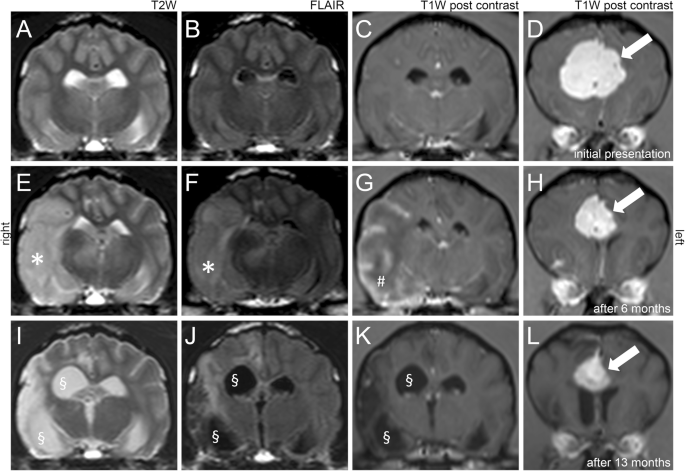
Magnetic resonance imaging (MRI), transversal view of dog 3, follow up examinations. T2weighted (T2W) imaging (a, e, i), Fluid attenuation inversion recovery (FLAIR) (b, f, j), T1W post contrast (c, d, g, h, k, l) on the level of the pituitary gland (a-c, e-g, i-k) and the level of the septal nuclei (d, h, l). MRI performed at initial presentation (a-d) with only a subfalcine mass present (arrow). MRI immediately after presentation due to peracute onset of clinical signs attributable to a lesion in the right cerebrum (e-h). The previously reported mass is of decreased size (arrow) but otherwise unchanged.
An additional intraaxial lesion attributable to an ischemic infarction of the right middle cerebral artery is visible. It is sharply delineated and involved the right cerebral hemisphere (asterisk). Marked homogeneous contrast enhancement of the outer layers of the cerebral cortex in the affected brain region is apparent (hash). Control MRI 13 months after initial presentation (I-L): the mass is reduced in size (arrow). In the area of the former presumed ischemic infarction, loss of parenchyma causes increased volume of the right lateral ventricle. Lisa Frank, BMC Veterinary Research 2020
Laboratory Tests
Bloodwork and urinalysis are essential tools for evaluating systemic health and organ function during cancer care. A Complete Blood Count (CBC) assesses red and white blood cells and platelets, where abnormalities may indicate anemia, infection, or cancer progression. Blood chemistry panels measure liver and kidney enzymes as well as electrolyte levels, helping detect paraneoplastic effects or underlying comorbidities. Urinalysis can reveal urinary tract involvement or secondary infections. While these tests are valuable for monitoring treatment tolerance and overall health, they are not definitive for diagnosing cancer.
Fine Needle Aspirate (FNA) and Biopsy
FNA extracts cells from masses via needle for cytological analysis. While minimally invasive, it may yield inconclusive results for poorly exfoliating or heterogeneous tumors. Biopsy (incisional/excisional) provides histopathological tissue architecture for definitive diagnosis. Surgical biopsies are prioritized when FNA is indeterminate or grading is required.
Staging and Grading
Determines tumor spread using the TNM system (Tumor size, Node involvement, Metastasis). Techniques include imaging (CT/MRI), lymph node palpation, and bone marrow analysis. Higher stages (e.g., Stage IV) indicate metastasis to distant organs. Evaluates tumor aggressiveness via histopathology. Grade I (low) tumors are less aggressive; Grade III (high) implies rapid growth and metastatic potential.
This integrated approach enables risk stratification, prognosis prediction, and personalized treatment planning, emphasizing early detection for optimal outcomes.
Treatment Options for Canine Cancer
A multidisciplinary approach and individualized treatment plans optimize outcomes and balance efficacy with quality of life.
Surgery
Surgery remains the cornerstone of cancer treatment in dogs, particularly for localized tumors. The primary goal is complete excision of the tumor with clean margins to prevent local recurrence. Surgical oncology expertise improves outcomes, as the first surgery offers the best chance for curative removal. Surgery can be curative alone or combined with adjuvant therapies to manage microscopic disease or reduce tumor burden before other treatments.
Chemotherapy
Chemotherapy uses cytotoxic drugs to kill or inhibit the growth of cancer cells systemically. It is often indicated for cancers that have metastasized, are inoperable, or as an adjunct to surgery and radiation. Combination chemotherapy protocols employing multiple agents with different mechanisms reduce drug resistance and improve efficacy while managing side effects. Common drugs include doxorubicin, vincristine, cyclophosphamide, and prednisone. Administration routes include intravenous, oral, or injectable forms, with treatment tailored to cancer type, stage, and patient health.
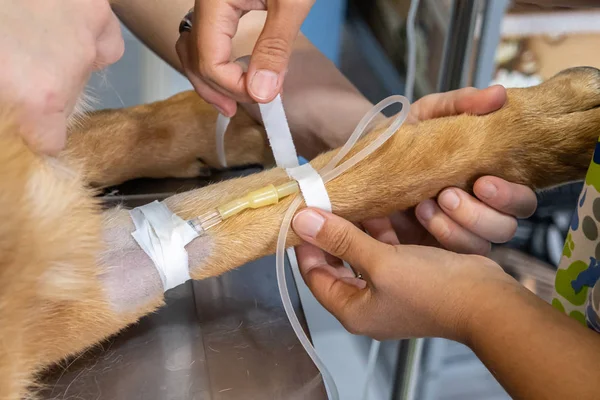
Photo: Depositphotos
Radiation Therapy
Radiation therapy employs ionizing radiation to induce DNA damage in tumor cells, causing cell death. It is particularly useful for tumors that cannot be fully resected surgically or as a palliative measure. Advanced techniques such as stereotactic radiation and intensity-modulated radiation therapy allow precise targeting, minimizing damage to surrounding healthy tissues. Anesthesia is required during treatment sessions to ensure immobility.

Immunotherapy
Emerging immunotherapies harness the dog’s immune system to target cancer cells. Approaches include tumor-targeting antibodies, checkpoint inhibitors, vaccines, and adoptive cell therapies like CAR-T cells. Immunotherapy may be used alone or combined with conventional treatments to enhance efficacy. While promising, availability and cost can limit access, and responses vary by cancer type.
Palliative Care and Quality of Life
For advanced or incurable cancers, palliative care focuses on symptom relief and maintaining quality of life. This includes pain management, nutritional support, and addressing complications such as infections or anemia. Decisions prioritize the pet’s comfort and owner’s goals.
Factors Influencing Treatment Choice
Treatment selection for cancer in dogs depends on several key factors. The type and histology of the tumor influence which therapies are most effective, while the stage and grade determine whether localized options like surgery are feasible or if systemic treatments are needed for metastatic disease. Tumor location affects surgical accessibility and radiation planning, and the dog’s overall health and comorbidities guide the intensity and type of therapy that can be safely administered. Additionally, owner preferences, financial considerations, and care goals play a crucial role in decision-making. A multidisciplinary, individualized treatment plan helps balance efficacy with quality of life.
You Can Also Read Cancer Immunotherapy Revolution: How Engineered Viruses and Pig Sugars Are Unlocking New Cancer Treatments by OncoDaily

What Is the Prognosis and Support Available for Dogs with Cancer?
Prognosis in dogs with cancer is influenced by a range of clinical and pathological factors. The type and histology of the tumor play a critical role, with certain cancers like carcinoma in mixed tumors often showing more favorable outcomes, while high-grade or undifferentiated tumors are linked to poorer prognosis. Tumor stage and the presence of metastasis are also key indicators—early-stage cancers without lymph node or distant spread typically result in longer disease-free intervals and overall survival.
For instance, dogs with lymph node metastasis in subcutaneous mast cell tumors had a median survival of 551 days, compared to 1722 days in those without metastasis. Histological grade further refines prognosis, with low-grade tumors associated with better survival metrics, while high-grade tumors predict significantly worse outcomes. Local recurrence after treatment is another negative prognostic factor. Additionally, the dog’s age, overall health, and previous cancer history influence survival expectations. Importantly, dogs receiving appropriate multimodal therapy—including surgery, chemotherapy, and radiation—tend to have better outcomes than those receiving only palliative care or no treatment.
Importance of Follow-Up and Monitoring
Continuous follow-up is critical to detect local recurrence or metastatic spread early, which can impact treatment adjustments and prognosis. Monitor for treatment-related side effects and manage them promptly to maintain quality of life. Assess overall health status and intervene in comorbid conditions that may affect survival and well-being. Regular veterinary visits, imaging, and laboratory tests form the backbone of effective monitoring protocols.
Emotional Support for Pet Owners
Cancer diagnosis in dogs can be emotionally challenging for owners. Providing compassionate communication, education about the disease and treatment options, and realistic expectations about prognosis are essential. Support resources may include counseling and support groups for pet owners facing difficult decisions. Guidance on palliative care and quality-of-life assessments to help owners make informed choices aligned with their pet’s comfort and dignity. Encouragement to maintain open dialogue with the veterinary team throughout the treatment journey.
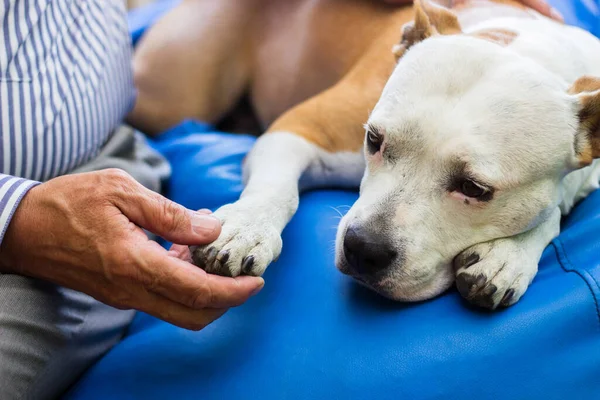
What Should Pet Owners Know About Managing Cancer in Dogs?
Cancer in dogs is a complex and multifaceted disease that requires timely diagnosis and a carefully tailored treatment approach. Early detection through vigilant observation of symptoms, comprehensive diagnostic evaluation, and collaboration with veterinary specialists significantly improves outcomes. Treatment options such as surgery, chemotherapy, radiation, and emerging immunotherapies offer hope for many canine patients, while palliative care remains essential for maintaining quality of life in advanced cases. Prognosis depends on tumor type, stage, and overall health, underscoring the importance of ongoing monitoring and follow-up.
If you notice any unusual signs or changes in your dog’s health, do not hesitate to consult your veterinarian promptly. Early veterinary intervention is vital to ensure the best possible care and support for your beloved pet.
Written by Aharon Tsaturyan, MD
FAQ
What are the most common types of cancer in dogs?
The most common types include lymphoma, mast cell tumors, bone cancer (osteosarcoma), blood vessel cancer (hemangiosarcoma), soft tissue sarcomas, and melanoma.
What are the early signs and symptoms of cancer in dogs?
Look for lumps or bumps, unexplained weight loss, low energy, swollen lymph nodes, bleeding that doesn’t stop, coughing, or trouble breathing.
How is cancer diagnosed in dogs?
Your vet will do a physical exam, take X-rays or ultrasounds, run blood tests, and may take a small sample of the lump (biopsy) to check for cancer cells.
What treatment options are available for dogs with cancer?
Treatments include surgery to remove tumors, chemotherapy, radiation therapy, newer immune-based treatments, and care to keep your dog comfortable if the cancer is advanced.
Which dog breeds are more prone to developing cancer?
Breeds like Boxers, Golden Retrievers, Rottweilers, Bernese Mountain Dogs, Boston Terriers, and English Bulldogs tend to have higher cancer risks.
Can cancer in dogs be cured?
Some cancers can be cured, especially if caught early. Others can be managed to help your dog live longer and feel better.
How long can a dog live after a cancer diagnosis?
It depends on the type of cancer, how advanced it is, and the treatment. Some dogs live months to years with proper care.
Are there any preventive measures to reduce cancer risk in dogs?
Regular vet check-ups, a healthy diet, avoiding exposure to harmful chemicals, and early detection can help reduce risk.
What is the difference between benign and malignant tumors in dogs?
Benign tumors don’t spread and are usually less dangerous. Malignant tumors can grow aggressively and spread to other parts of the body.
How can I support my dog’s quality of life during cancer treatment?
Make sure your dog gets pain relief, good nutrition, regular vet visits, and lots of love and attention.
